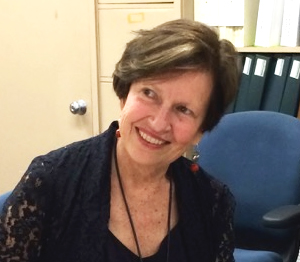
Ph.D.,San Jose State University, director of the National Steinbeck Center in Salinas, California. She is also a Professor of English at San Jose State University, where she was Director of the university’s Center for Steinbeck Studies and was the President’s Scholar for 2012-13. For the past 29 years she has been a scholar of John Steinbeck’s work, speaking frequently on the author’s impact and relevance.
Dr. Shillinglaw has published widely on Steinbeck, most recently Carol and John Steinbeck: Portrait of a Marriage (University of Nevada Press, 2013) and On Reading The Grapes of Wrath (Penguin, 2014) as well as A Journey into Steinbeck’s California (2006; 2011). She also wrote introductions to several of Steinbeck books for Penguin New American Library editions of Cannery Row, Of Mice and Men, A Russian Journal and The Winter of Our Discontent. Other publications include collections of scholarly essays (i.e. Steinbeck and the Environment, 1997) as well as an edition of Steinbeck’s journalism, America and Americas and Selected Nonfiction (2002).
Global is local, and local is global: John Steinbeck’s Soviet Union/America/California
(excerpt)
The two artists set forth with the intention of focusing on ordinary Russians living in Moscow, Kiev, Stalingrad and Georgia. “I have finally worked out what I could do in Russia,” Steinbeck wrote in a journal, before their departure: “I could make a detailed account of a journey. A travel diary. Such a thing has not been done. And it is one of the things people are interested in” (Wayward Bus diary). Capa was similarly riveted by detail. A war photographer whose photographs captured the marrow of a place and time, he was capable of presenting “a cut out of the whole event … [and] show more of the real truth of the affair to some one who was not there than the whole scene.” (“The Man Who Invented Himself”). A sharply focused human perspective was thus Steinbeck and Capa’s central purpose in traveling to the “enigmatic country,” as Americans saw Russia in 1947, when “Russian and American governments [were] ey[ing] each other with intense mutual distrust.“

